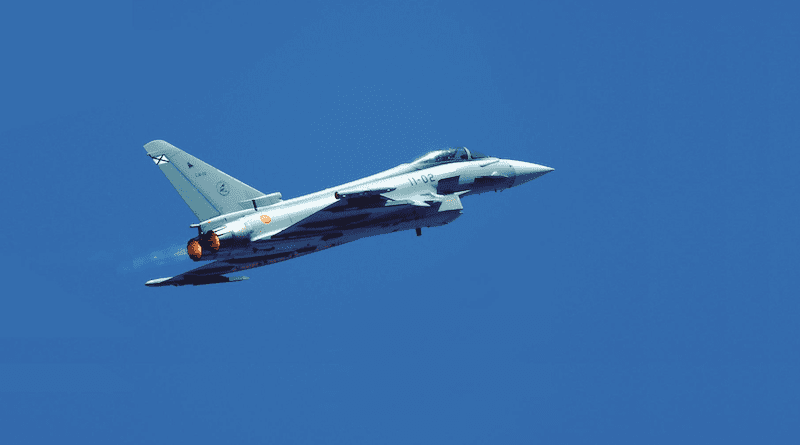Indra To Strengthen Eurofighter’s Survivability
Indra said Monday it is furthering the integration of one of the most important elements for the evolution of the system that protects the Eurofighter Typhoon against enemy missile attacks and radar. The company will enhance the Praetorian DASS’s bandwidth to increase the aircraft’s ability to detect threats and fly safely during its most complex missions.
At the Royal International Air Tattoo (RIAT), the world’s largest military air event, Leonardo, on behalf of the EuroDASS consortium (Leonardo, Elettronica, Indra and Hensoldt), announced the next package of improvements to the Praetorian DASS self-protection system. This has been accompanied by a static exhibition of the key enhancement proposed, including the bandwidth enhancement developed by Indra.
These improvements will be presented to the Eurofighter Typhoon partner countries, which are Germany, Spain, Italy and the United Kingdom, and subsequently offered to export customers. Their development will increase the survivability of the aircraft and lay the foundations for the defence system’s integration with Typhoon’s highly capable E-scan radars. This includes the ECRS Mk1 that is being developed by Hensoldt and Indra with the support of Leonardo for the German and Spanish Air Forces, the ECRS Mk2 currently under development by Leonardo and BAE Systems with the participation of Indra for UK Typhoons and the ECRS Mk0, which is in operation in Kuwait and Qatar
Indra’s Defence Platforms director, Pedro Barco, highlighted that “Indra is the second-largest supplier of avionics systems for the Eurofighter Typhoon and the only company involved in the evolution of the self-protection system and the development of the two new versions of the radar, once again highlighting the company’s ability to accelerate the development of the new generation of technologies that European armed forces are demanding”.
In addition to the greater bandwidth, the new Praetorian DASS will incorporate a new advanced digital signal processing, jointly developed with the EuroDASS partner Hensoldt, and new signal processing algorithms, as well as increased processing speed, capacity and memory.

